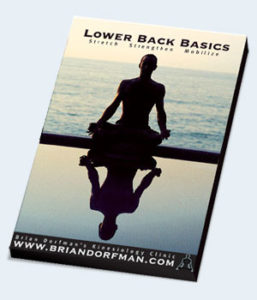Basketball is one of my favorite topics and even more so when the Golden State Warriors are crushing it in the play-offs. This post, however, is not about the glory of victory, but about the pain of defeat for the Warrior’s head coach, Steve Kerr.
In June 2015, Kerr underwent surgery to remedy lower back pain. Just 3 months later he had a second surgery to deal with complications from the first. Now, a year and a half later, Kerr’s situation is worse than ever. Along with constant lower back pain, he continues to suffer from severe headaches, nausea and other debilitating symptoms resulting from a medical error, which occurred during that initial surgery.
If you are considering back surgery, Coach Kerr has these words of caution: “I can tell you if you’re listening out there, stay away from back surgery. I can say that from the bottom of my heart. Rehab, rehab, rehab. Don’t let anyone get in there.”
Personally, I believe that surgery works wonders in the right situations. The problem is, however, that surgery is being over prescribed and the risks are being minimized. When complications do occur, there is little accountability.
In my mind, Steve Kerr is the poster child for all the individuals who are having complications from medical intervention. In 2016, the British Medical Journal reported that medical errors are now the third leading cause of death in the United States. I imagine that Kerr had an excellent surgeon, yet even the best are causing problems, possibly more than they are creating solutions.
In today’s profit-driven health care system surgical procedures are recommended casually, without fully exploring other options, and with little transparency about the serious risks involved. For back surgery, the list of potential complications is a mile long, so the surgeon says, “Oh, by the way, 100 things could happen if we proceed with this surgery, but we expect good results.” What they fail to do is give you the hard facts about the most common complications. Or tell you that they’ve had a history of complications in their practice, or with the procedure in general.
So how are you, the patient, supposed to decipher it? Like many things, it’s difficult to know the fine print until you’re deep into it, which is where Coach Kerr is now finding himself. Of course, he was hoping for the best-case scenario, but when we are in pain, our decision-making skills are not as sharp as they might otherwise be and we are apt to make mistakes.
 For the surgeon, there are often no viable options that they are educated about except their surgical option. Other options that have been shown to relieve lower back pain, such as massage therapy, biomechanic and postural adjustments, acupuncture, yoga therapy and stretching are often looked down upon and dismissed. Most medical doctors are not educated in these modalities and they don’t believe in them.
For the surgeon, there are often no viable options that they are educated about except their surgical option. Other options that have been shown to relieve lower back pain, such as massage therapy, biomechanic and postural adjustments, acupuncture, yoga therapy and stretching are often looked down upon and dismissed. Most medical doctors are not educated in these modalities and they don’t believe in them.
The statistics of people sickened and dying from medical intervention are clear. Pharmaceuticals often cause more problems than they cure. Surgery often results in serious complications. It is a continuing conversation about the ineptitude of the modern medical system as practiced in this country today. It is one of the elephants in the room in any honest discussion about health care.
Coach Kerr calls on those dealing with lower back pain to “rehab, rehab, rehab” and we agree. At Dorfman Kinesiology we have helped thousands of people avoid unnecessary, risky back surgery using therapeutic massage, postural adjustments and exercises to relieve lower back pain. A very simple protocol for addressing this issue can be found in my “The Best Way to Sit” video and Lower Back Basics program. You don’t need to be an Einstein to know how to relieve lower back pain without surgery. Sit up straight, get a massage, make time to stretch and you too will feel better forever.
